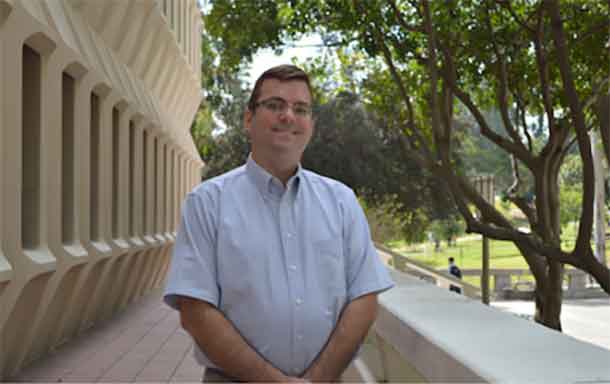 Irvine, Calif – ENVIRONMENT – Last year, as media coverage of Flint, Michigan’s lead-in-water crisis developed, a cautionary tale emerged about the repercussions of cost-saving infrastructure changes and lax governmental oversight, and their disproportionate effect on impoverished communities.
Irvine, Calif – ENVIRONMENT – Last year, as media coverage of Flint, Michigan’s lead-in-water crisis developed, a cautionary tale emerged about the repercussions of cost-saving infrastructure changes and lax governmental oversight, and their disproportionate effect on impoverished communities.
It began in April 2014 when the city of Flint canceled its contract with the Detroit Water and Sewage Department and began buying water from the Flint River as an interim supply, with the ultimate goal of sourcing water from Lake Huron through the Karegnondi Water Authority. KWA was building the infrastructure to make this possible.
The Michigan Department of Environmental Quality assured the public that the water met its safety standards. However, Flint officials failed to add an anti-corrosive chemical or treatment to the water to prevent lead leaching from the pipes into the water supply. As a result, lead and other toxins contaminated the water, causing widespread illness and destroying the public’s trust in the city.
A few key dates:
- Oct. 1, 2015: The Genesee County Health Department declares a public health emergency
- Dec. 14, 2015: Flint Mayor Karen Weaver declares a state of emergency
- Jan. 5, 2016: Gov. Rick Snyder declares a state of emergency
- Jan. 16, 2016: President Obama declares Flint an emergency, but not a natural disaster
We reached out to Andrew Highsmith, historian at the University of California, Irvine, and former Flint resident, for his insight into the city’s progress nearly a year later and where it might be headed in 2017.
Highsmith has studied the structural barriers to racial equality and economic opportunity in Flint for more than a decade. His book, Demolition Means Progress: Flint, Michigan, and the Fate of the American Metropolis (University of Chicago Press, 2015), is in many ways a pre-history of Flint’s water crisis. Over the past year, he has been quoted and featured as an expert in several news stories about the emergency.

A: The city stopped using the Flint River water and reconnected to the Detroit Water and Sewage department. They addressed the root of the problem by adding corrosion inhibitors, and approximately 600 lead pipes have been replaced out of an estimated 29,000. However, this year, Flint still plans to switch to the Karegnondi Water Authority, which is problematic given the city’s history in handling the treatment of its water. Thus, we’ve only scratched the surface of restoring clean drinking water to Flint residents. Congress cleared legislation to provide $170 million to deal with the Flint crisis and help other communities with lead-tainted water. That’s a step in the right direction. Lead levels seem to be dropping in the system, but a recent test by scholars at Virginia Tech revealed that five percent of homes in the city still have more lead in their tap water than federal standards allow. That’s thousands of residents who cannot use the tap water in their homes. It’s important to note, too, that the federal standard for lead levels is itself a very minimal standard – 15 parts per billion – and is now being reconsidered. Everybody who knows lead will tell you there’s no there’s no safe amount to have in your water.
Another issue is the battle over water delivery in the city because, even with the improvements, the experts at all levels of government are saying no one should drink the water in Flint without a lead filter, or they should drink bottled water.Unfortunately, the state has challenged a court order mandating that they deliver bottled water to local residents who don’t have properly installed filters. Furthermore, a lot of people in Flint are homebound, or have no access to a car or other transit to get to the pick-up stations. Imagine having to cook, bathe, clean and go about your life using bottled water.
To sum it up, there have been some signs of encouragement, yet this crisis lingers. There’s a general cynicism about the ability of the government to solve this problem.
Q: Is the incoming presidential administration expected to affect the Flint crisis?
A: President-elect Donald Trump’s selection of Scott Pruitt to head the Environmental Protection Agency could affect Flint’s long-term push to replace its pipes. I anticipate pushback over the new, more aggressive lead-in-water rules the EPA is considering – in part because of what happened in Flint. We’ll have to see what happens with the new EPA director who’s an opponent of regulation.
As it is, the EPA’s insufficient monitoring of the Michigan Department of Environmental Quality and whistleblower complaints submitted there contributed to the problem. Many months transpired between initial reports and any concrete action. This case suggests a lot of policy remedies, but the main lesson is that we need regulations and the aggressive enforcement. In Flint, the regulations were in place, but were not enforced. And that baffles scientists, because it’s common knowledge that when you have a corrosive river water supply, you add anti-corrosive phosphates. If we get into situations where the regulations themselves are compromised, then that’s an even more grievous situation.
We also can expect additional activism surrounding Flint in 2017. Given the success of the No-DAPL (Dakota Access Pipeline) movement, and the fact that the city is on veteran activist Wes Clark Jr.’s radar, as well as Flint being a hotbed for grassroots activism, I anticipate we will see people coming together to protest any delay of progress.
Q: How does Flint illuminate the convergence of race and environmental issues?
A: We can compare the Flint and the anti-Dakota-Access-Pipeline scenarios. You have poor communities facing infrastructure issues – both real and potential – that prioritize some lives over others. In Flint, citizens believe that this kind of disaster wouldn’t have happened in an all-white suburb. It’s an indication that black and brown lives, and poor white people’s lives, aren’t as valued as more affluent white lives. And the way in which this has been handled – at all levels of government – really confirms that sensibility.
If we want to understand this as a social justice issue, we also have to go a little deeper and think about how it came to be that Flint, a majority black city, is surrounded by nearly all-white suburbs – 90 percent white. We’ve got to think about the legacy of segregation, and how the utility system is fragmented along political and jurisdictional divisions. The crisis unfolded only in Flint and marginalized people have had to bear a disproportionate burden.
Q: What is next for your research?
A: My current book project, Toxic Metropolis: Cities, Suburbs, and the Battle over Public Health in Modern America, is a much broader national and trans-national study of health inequality in modern America. It’s not set in one particular place, but, certainly, the story of Flint will appear in it.
I address the relationship between metropolitan development and public health. There are patterns in where and how close we live to toxic facilities. As an urban historian, I’ve realized that we haven’t really thought enough about how inequality takes shape at the level of the body. The Flint water crisis really confirmed this for me.
People often take for granted the association between where they live and their health. But historians can provide a deeper understanding of how health inequities have emerged over time and, hopefully, a sense of how to ensure all people – no matter their race or socioeconomic status – have access to the resources they need to live healthful lives.
About the University of California, Irvine: Founded in 1965, UCI is the youngest member of the prestigious Association of American Universities. The campus has produced three Nobel laureates and is known for its academic achievement, premier research, innovation and anteater mascot. Led by Chancellor Howard Gillman, UCI has more than 30,000 students and offers 192 degree programs. It’s located in one of the world’s safest and most economically vibrant communities and is Orange County’s second-largest employer, contributing $5 billion annually to the local economy. For more on UCI, visit www.uci.edu.






